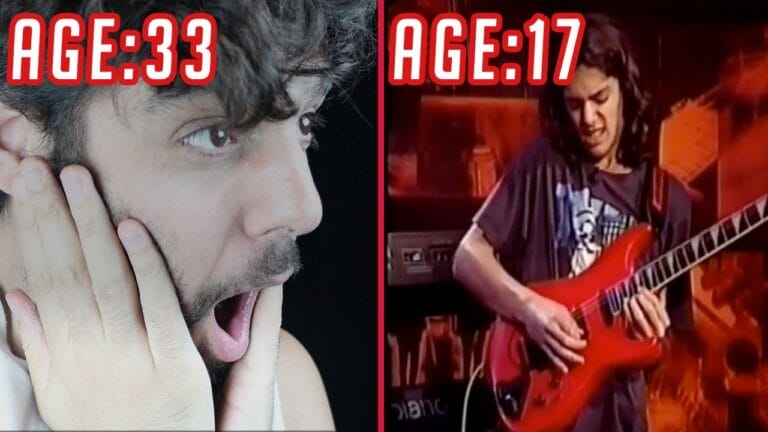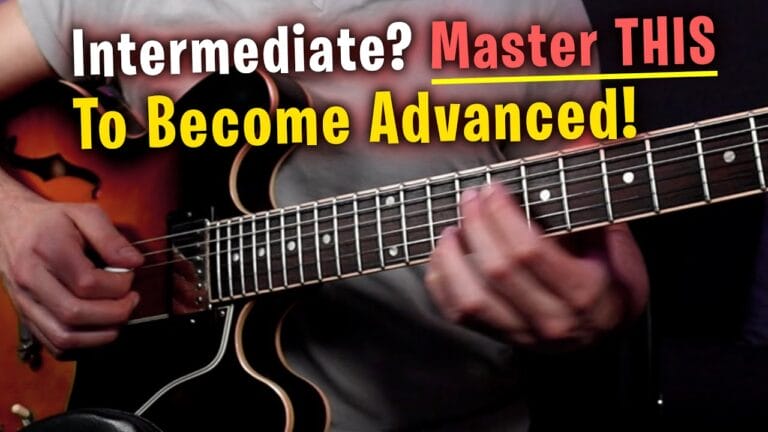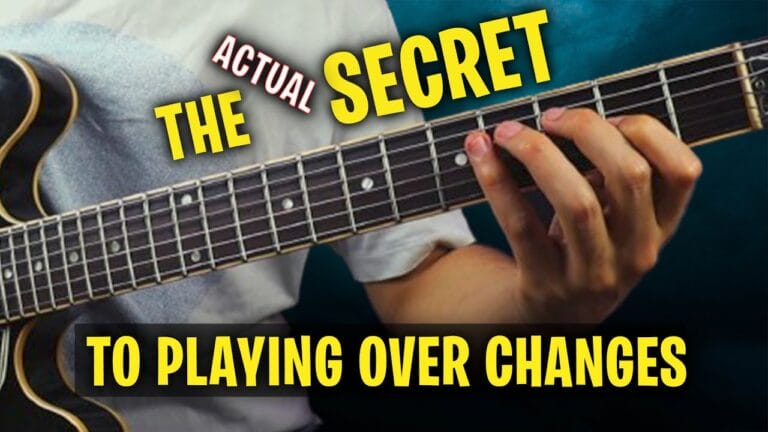The 1 Arpeggio Every Modern Guitarist Should Know!
[Music]
One shape
And the coolest way to spice up your pentatonic and dorian or whatever playing you want. Actually, these are just amazing. Here’s what I’m talking about. Just one thing, guys, please make sure to subscribe to never miss any videos and also press that like button for me, okay?And let’s begin, let’s begin.
Demonstration
[Music]
[Applause]Lesson
All right, everyone. So I’m really excited about this lesson because I’m really addicted to this shape. If you know my playing, you will hear it everywhere in my playing. And this is really cool because it’s one shape and you can move it around in different scale degrees to create that kind of beautiful, sassy (sassy means sus4) sound. Here, let me just show you.
So if we’re starting on a pentatonic F over here, this is the fourth degree. We can just play that shape. So we have a fourth and a second and a fourth, and then we can just complete the full arpeggio.
So just one time, let’s go through it. This is the 13th fret, 8th fret, 11th fret on the B string. Then on the G string, we have 10. On the D string, we have 10, 13, and 13. That’s the string, and on the E string, we have this shape.
And you also have the seven of the chord over here, which I really like.
[Music]So this gives you parts of the pentatonic scale, but even if you use it on other chord tones, it still works. Like, let’s take for example from the root. Check this out.
This gives you the root, the five, the four, the root’s pentatonic scale. Let’s try it out with the five over here on G. Well, this will give us something else. It’s not in the pentatonic, but it still works. It’s the nine. Really cool.
Let me play those slowly for you.
[Music]Well, obviously, you see this is also a great sweeping technique exercise.
[Music]Same exact thing. And then we have…
Now, a few ways you can practice this is just like combining it with the pentatonic shapes that you can already see. So if you know this…
[Music]This box, you can try combining those.
[Music]Then you go over here. You have this pentatonic box.
[Music]
[Applause]Also same pentatonic box. And now you can really go modern with this stuff. I mean, you can start moving around like crazy. Okay, it’s really cool. Here’s an example: like I’m over here and I want to go over here, right? So I can use a chromatic approach.
And this is the sound I get.
[Music]That’s my pentatonic lick and then the sus4 arpeggios. Now I want to reach over here to the root again, so I can go…
Or I can use all these fourths chromatically.
[Music]So one shape and so much information that you can take from it. You know, you can really milk that idea and make all those beautiful open sounds and go back to the closed, more pentatonic stuff. You know, open sus chords, closed pentatonic, open, close, and open and close. You know, you combine the scale with this beautiful arpeggio. And I thought this is something worth sharing today.
Another thing you can do is not play the whole arpeggio, just play parts of it.
[Music]You can go like maybe one, two, three, one, two, two, three, one, two, three, one, two, three, one, two, three, one, two, three, one, two, three, one, two, three.
That, of course, would not be sweeping.
All right, everyone. This was just a really quick lesson that I had to show you. This thing when I jammed today and was like, I gotta tell you guys about it. Please make sure to subscribe, hit the like button. In the comments below, let me know what you’re practicing and what kind of videos you would like me to make.
Also, if you love this kind of style and modern playing and all that kind of stuff, please check my course 51 Galactic Jazz Licks and Galactic Modern Guitar. And I’m really happy to say there’s a new course, Diminished Licks and Workouts. Lots of online programs, guys, so make sure to check it out on my website, weissguitar.com.
And that’s it. That’s my jam for today, and I’ll see you in the next jam. Peace out. Bye.
[Music]
It is amazing how you can take one idea, one arpeggio, and match it with different parts of a given scale to create different sounds, allowing you to develop a theme in your solo and direct the listener’s attention to one concept at a time.
This one arpeggio has a modern, fresh feel to it
You can use the video to get some ideas, put some on your favorite backing tracks, or simply play along/as you discover how you can blend this into your natural playing to boost your ideas and create an uplifting sound.



















